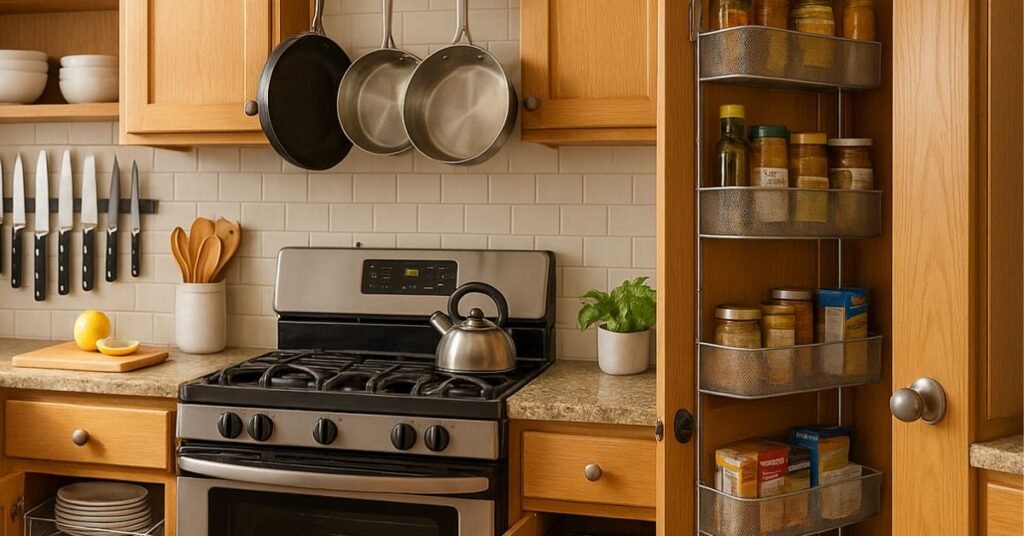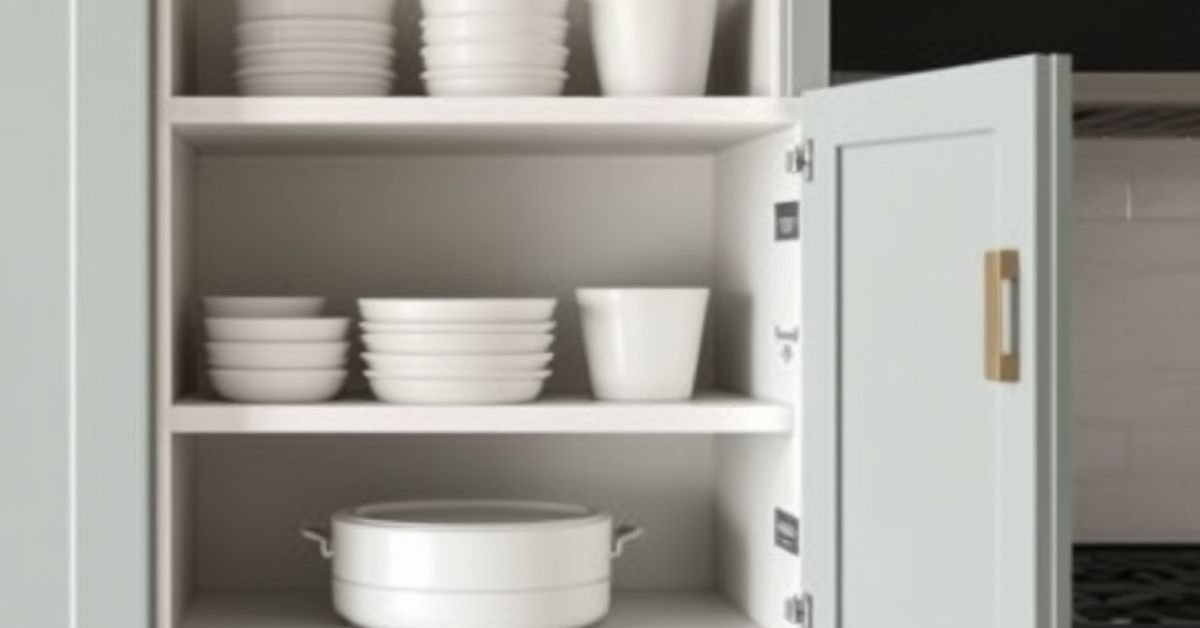
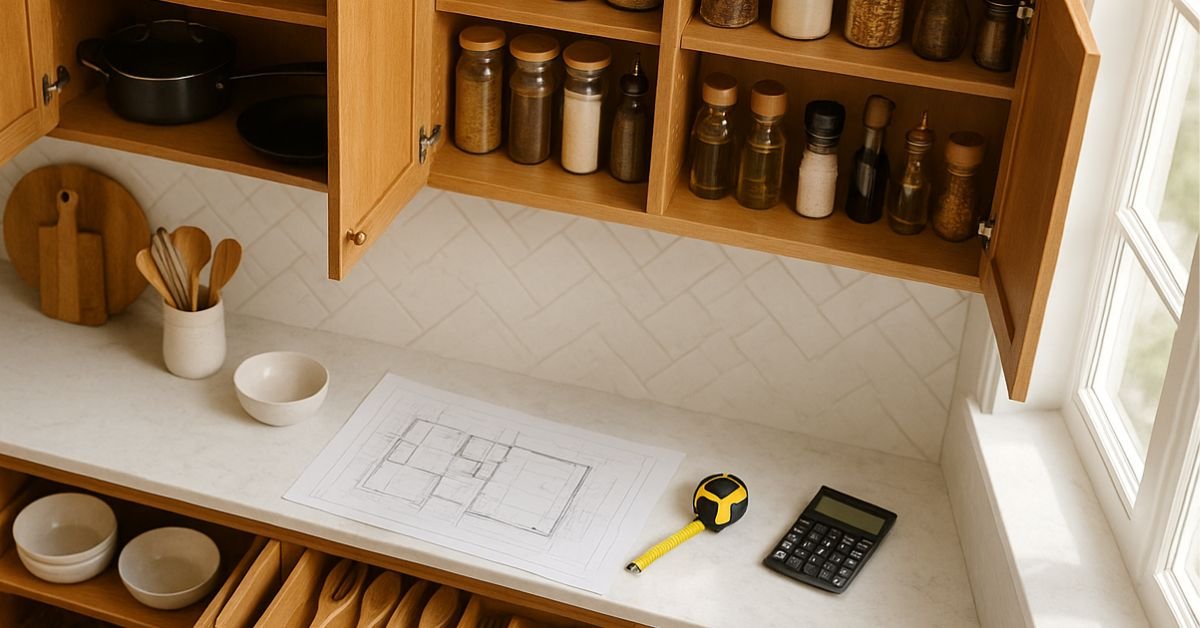
Our editorial team individually chooses every product that is suggested on neatcupkit. We might get paid if you buy something after clicking on any of these links.
Having an organized kitchen can transform your cooking experience, making it more efficient and enjoyable. Understanding how to calculate kitchen storage is crucial for planning your space and maximizing capacity. This guide will help you navigate the complexities of kitchen design, ensuring your cabinetry, drawers, and pantry are optimized. Whether you’re remodeling or just reorganizing, learning these principles is key to creating your dream kitchen.
Your kitchen design should reflect your unique storage needs. For instance, a small kitchen might require more compact and innovative solutions like pull-out drawers and vertical storage. Standard cabinets and wall cabinets can be adapted to suit different kitchen sizes and layouts. Understanding these needs helps in determining how many cabinets and shelves are necessary to organize your space effectively.
Accurate measurements are fundamental to optimizing kitchen storage space. Measuring kitchen cabinets, including their height, width, and depth, ensures you utilize every inch effectively. Base cabinet dimensions and the number of shelves in upper cabinets can make a significant difference in storage capacity. These measurements are crucial for any kitchen remodeling project or when planning new kitchen installations.
Various methods can be employed to calculate kitchen storage, such as measuring cabinet space or calculating drawer capacity. Knowing the cabinet height and other dimensions, like 24 inches or 36 inches for standard cabinets, is essential. Additionally, understanding how to assess pantry cabinet and kitchen island storage can aid in efficient kitchen planning. These methods ensure your kitchen layout accommodates all storage solutions.
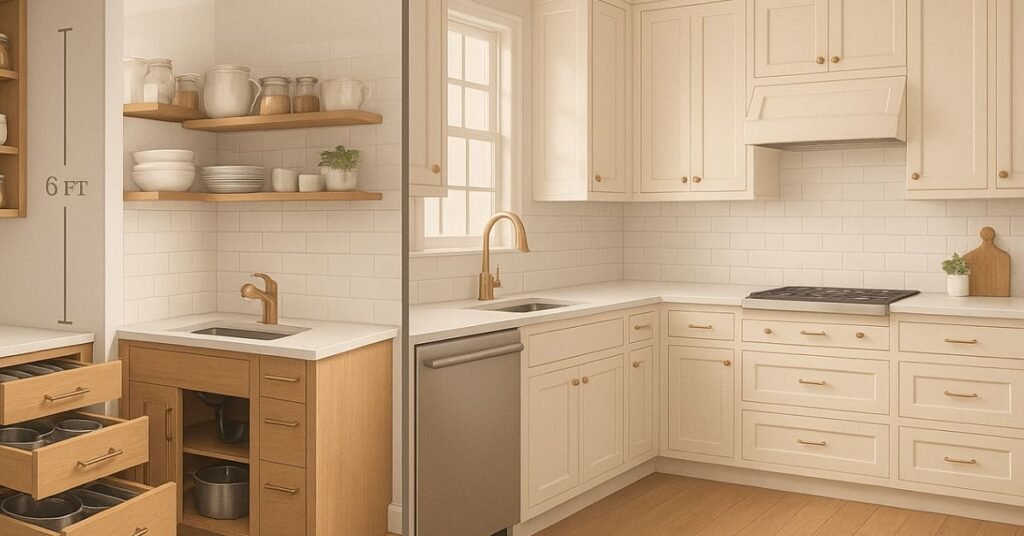
Accurate kitchen storage calculation maximizes efficiency by ensuring everything has its place. It allows you to arrange items in a way that enhances accessibility, reducing the time spent searching for items. This efficiency is crucial for maintaining a smooth workflow in the kitchen, making cooking and cleaning tasks more manageable and enjoyable.
Proper calculation prevents overcrowding and clutter, common issues in both large and small kitchens. By understanding your storage needs and measuring accurately, you can avoid the frustration of cramped spaces. Using tall cabinets or a pantry cabinet effectively organizes your kitchen, keeping countertops clear and creating a more inviting cooking environment.
An organized kitchen enhances workflow, allowing for seamless movement during meal preparation. Accessibility is improved with well-planned cabinet space and the strategic placement of storage areas. This planning helps in accessing frequently used items easily, making your kitchen a functional and pleasant space to work in, whether you’re preparing a quick meal or hosting a dinner party.
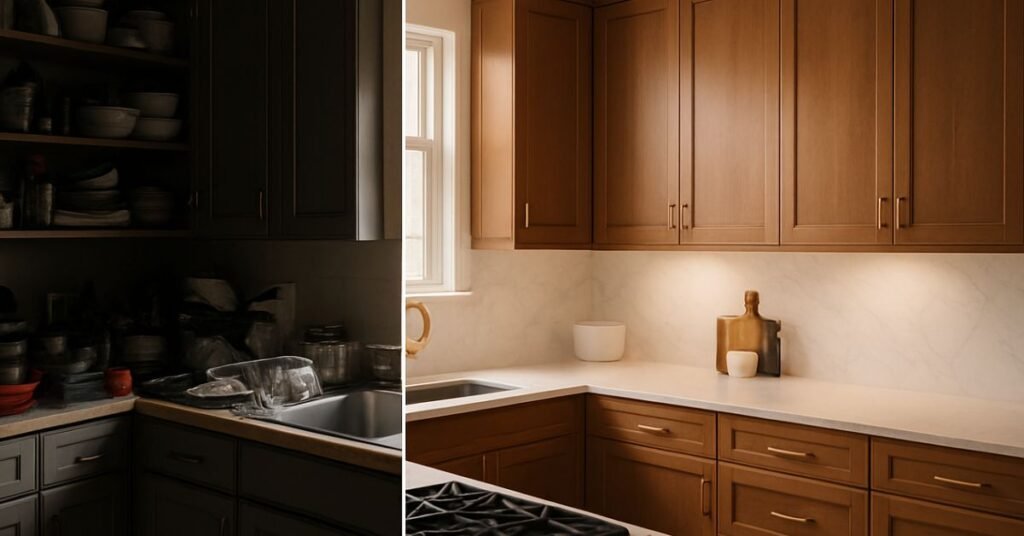
First, identify all potential storage areas in your kitchen. Key areas include cabinets, shelves, and drawers. Evaluating your kitchen layout helps determine how much storage space is available. Consider both upper cabinets and base cabinets, as these are essential for organizing cookware, utensils, and other kitchen essentials. Additionally, explore options like pull-out drawers and tall cabinets, which can maximize storage capacity.
To measure cabinet size and capacity accurately, start by noting the standard cabinet dimensions. Understanding these measurements helps in planning the storage capacity. Consider the number of shelves within cabinets, as they significantly impact overall storage efficiency.
Cabinet Type | Dimensions |
Base Cabinets | 24 inches deep and 34.5 inches high |
Wall Cabinets | Depths range from 12 to 24 inches, heights vary from 30 to 42 inches |
Calculating the linear feet for cabinets is essential in understanding storage potential. The table below outlines the recommended shelf/drawer frontage for different kitchen sizes:
Kitchen Size | Shelf/Drawer Frontage (in inches) |
Small Kitchen | 1,400 |
Medium Kitchen | 1,700 |
Large Kitchen | 2,000 |
Multiply the cabinet frontage size by the number of shelves and cabinet depth to determine total storage. This formula is crucial for maximizing cabinet space and ensuring every inch is used efficiently.
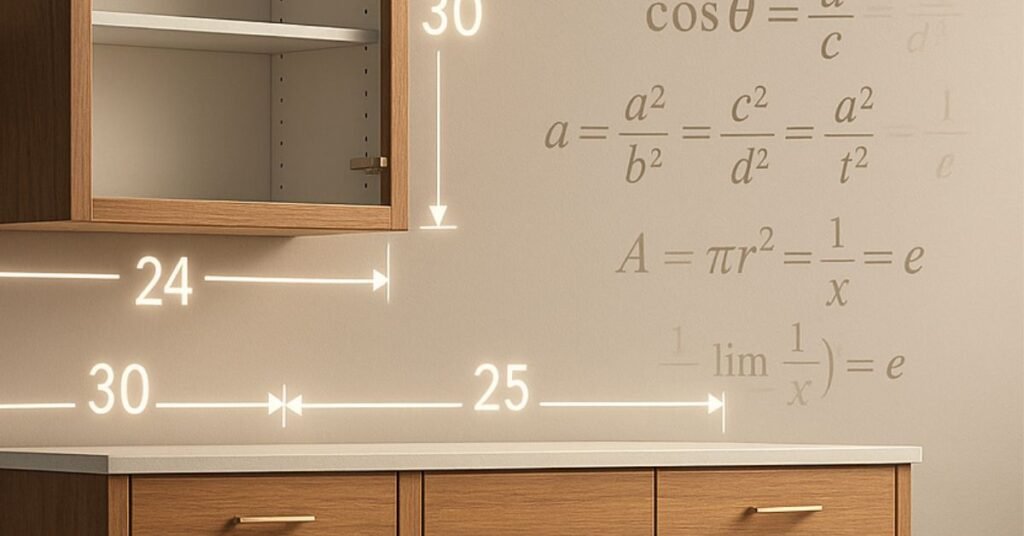
Accurate measurements are crucial for a successful kitchen remodel. Essential tools include a measuring tape, a ladder for reaching high areas, a calculator for computations, and a level to ensure precise installations. These tools help measure kitchen cabinets, drawer depths, and pantry spaces accurately, ensuring you make the most of your kitchen design and avoid costly mistakes during renovations.
Start measuring by sketching a layout of your kitchen. Measure each wall’s length at a height of 36 inches from the floor. Consider all dimensions, including cabinet depth and width. Exclude windows or appliances from measurements to focus on usable space. Consistently measuring various spots ensures accuracy and allows for adjustments in kitchen planning, crucial for achieving your dream kitchen.
Embrace technology for efficient kitchen space planning. Apps like Canvas.io allow you to capture your kitchen in a 3D format using your phone’s camera. Tools like Lowe’s Kitchen Designer can assist in determining how many cabinets you’ll need. These technological solutions simplify the process of measuring kitchen storage, ensuring that your kitchen remodel meets all storage needs with precision.
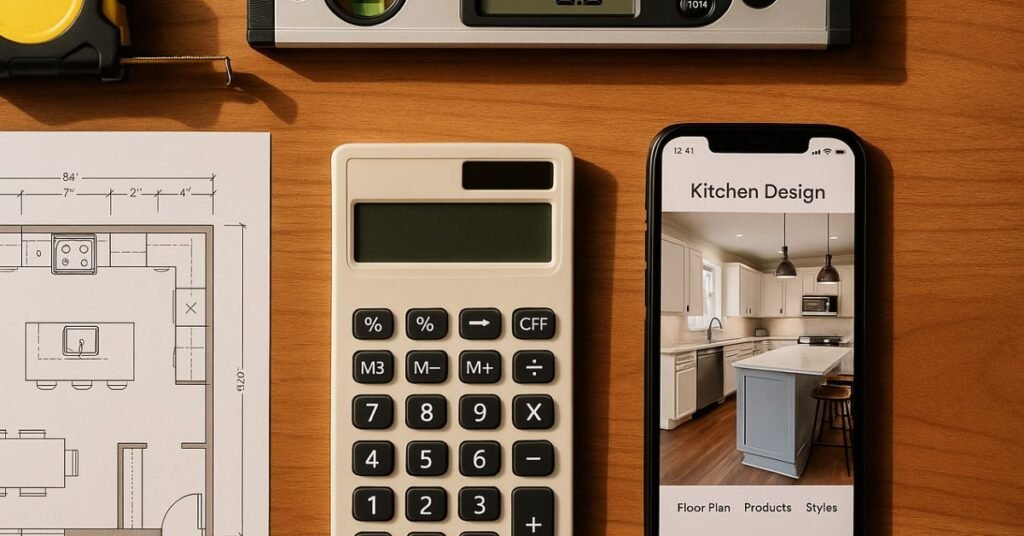
Determining the right storage for cookware and utensils is essential for efficient kitchen planning. Consider how much dry storage you need and whether more drawers for pots and pans are required. Evaluate the number of utensils and gadgets needing dedicated space. This helps in organizing your kitchen layout, ensuring every item has its place, and maximizing cabinet capacity.
Effective food storage starts with assessing pantry and refrigerator needs. Measure available pantry space and consider how often you restock groceries. For the refrigerator, ensure there’s adequate room for perishables and meal prep ingredients. Organizing food storage efficiently helps in maintaining a clutter-free kitchen, making meal planning and preparation more straightforward.
Storing appliances requires careful space planning. Consider appliance storage options like under-cabinet shelving or dedicated pantry areas. Measure each appliance to determine ideal storage spots, ensuring they are accessible yet unobtrusive. This approach optimizes kitchen space, creating a functional environment where appliances are readily available but do not dominate the countertop.
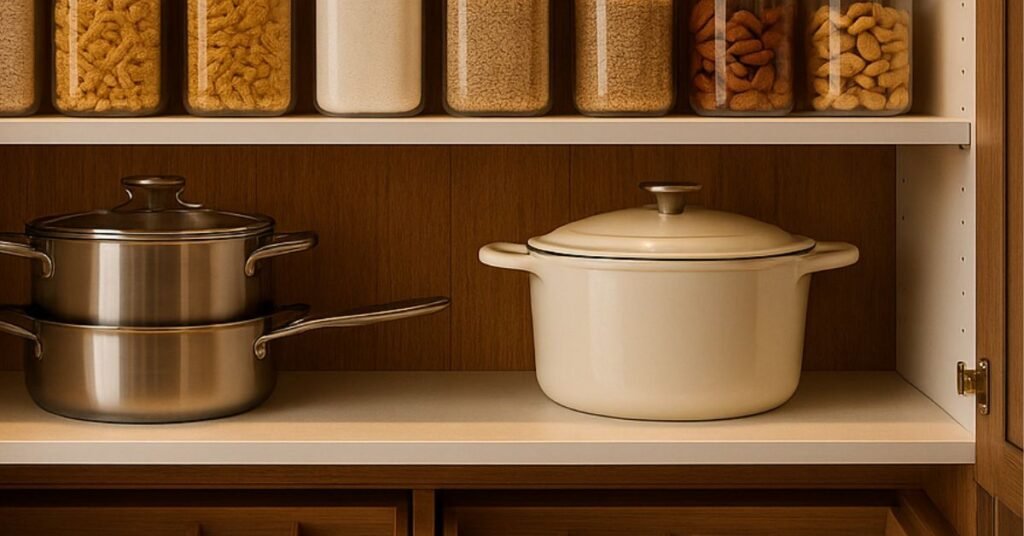
Understanding how to calculate kitchen storage involves several key strategies. Measure cabinet sizes, assess drawer capacities, and evaluate pantry and appliance storage needs. These steps ensure you optimize every inch of your kitchen, creating a layout that supports seamless cooking and dining experiences. Accurate measurements are the foundation of an organized and efficient kitchen space.
Planning for optimal kitchen storage transforms your space into a dream kitchen. Use the outlined methods to determine how many cabinets and shelves you need. Whether you’re working with a small kitchen or a large one, thoughtful planning enhances functionality and aesthetics. Embrace these strategies to enjoy a kitchen that meets all your storage needs and inspires culinary creativity.
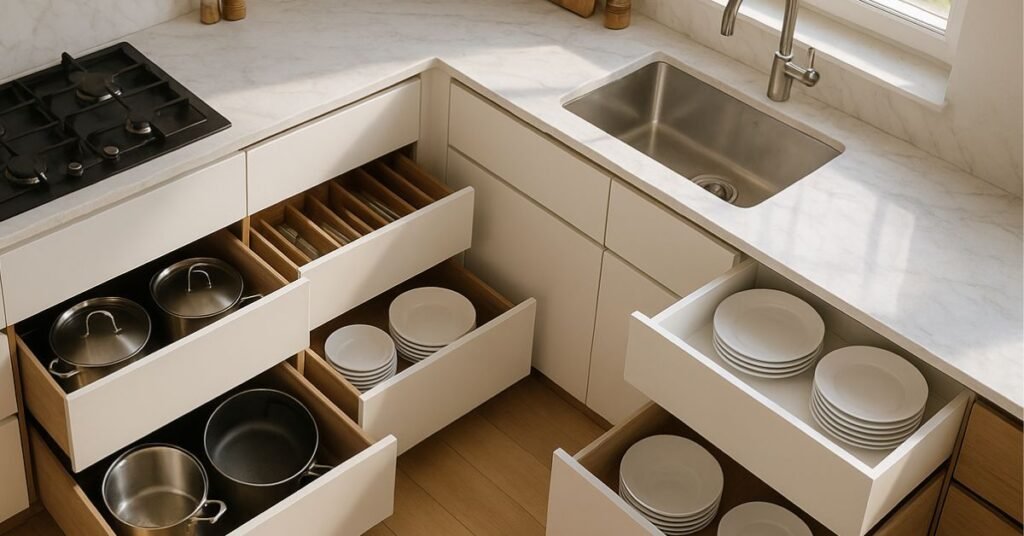
Determining your kitchen storage needs starts with evaluating your cooking habits and lifestyle. Consider the types of items you frequently use, like cookware, utensils, and appliances. Assess how much dry and refrigerated storage you need. By understanding your unique requirements, you can plan a kitchen layout that provides ample storage space without overcrowding.
The best way to measure existing kitchen storage is to measure your cabinets from the outside for the most accurate information. Use a measuring tape to determine the cabinet width, height, and depth. This includes measuring upper cabinets, base cabinets, and any specialty storage like pantry cabinets. Accurate measurements ensure efficient utilization of available storage space.
Planning storage for a small kitchen requires creative solutions to maximize space. Consider using vertical storage solutions and pull-out drawers to make use of every inch. Opt for compact, multi-functional cabinetry that offers flexibility. Thoughtful planning in a small kitchen involves maximizing storage capacity without compromising on accessibility or kitchen aesthetics.
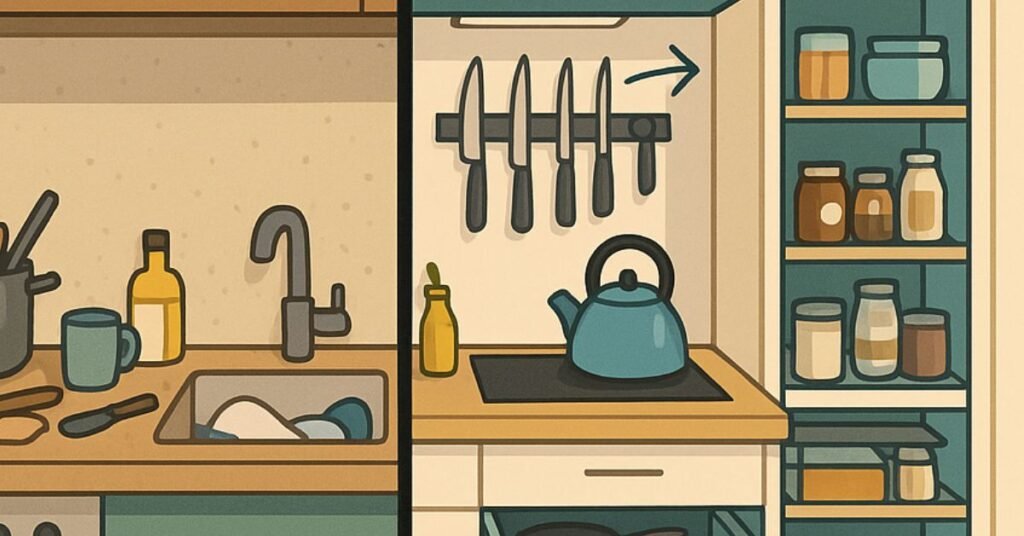
Yes, there are standard measurements for kitchen cabinets and drawers.
Type | Measurements |
Upper Kitchen Cabinets (Width) | 12 to 36 inches |
Base Cabinets (Width) | 12, 15, 18 inches up to 42 inches |
Base Cabinets (Height) | Generally 34.5 inches |
Wall Cabinets (Height) | 30 to 42 inches |
Knowing these standards aids in planning your kitchen’s storage effectively.
To increase storage without renovating, consider adding organizational tools like shelf risers, pull-out baskets, and magnetic strips for utensils. Use vertical space by installing additional shelves or hooks for hanging items. Rearrange existing cabinetry to improve accessibility and make better use of space. These simple adjustments can significantly enhance your kitchen’s storage capacity without the need for a full remodel.
